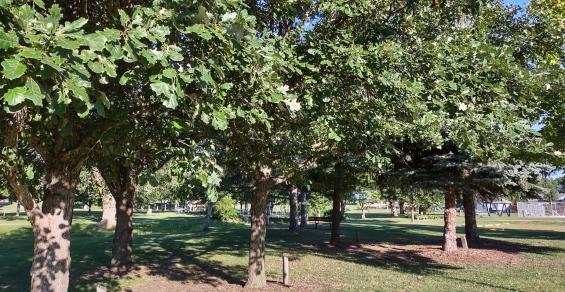Farmstead Forest: Planting trees in groups, rather than in rows, mimics nature’s way.
We tend to love symmetry around the farmstead. We plant shelterbelts in rows — not only because rows are an effective way to mitigate heavy winds around the farm and livestock yards, but also because shelterbelt rows trip the snow — and they look nice from the road.
Silviculture works better in rows because it is easier to graze livestock among rows of woodlands. Around our home landscapes, we like things neat, orderly and in rows.
However, nature is often messier. Unless the tree seeds are planted by the birds along fencerows, tree groupings in nature tend to be in clusters, not rows. In nature, symbiotic groupings of trees and a diverse grouping of varied species of trees, with three or more trees or shrubs growing in close proximity of each other, are more the norm.
In our hometown arboretum, which spans our park system, the local tree board has strategically planted clusters of trees and shrubs interspersed with the more formal rows of trees.
The clusters were planted purposely along a creek that flows through one of the parks as part of a more “riparian environment” approach, trying to mimic nature with groupings of maple, oak, cottonwood, pine and spruce.
There are some advantages to the cluster-planting method in your own farm landscape:
Easy maintenance. Clustered trees are easier to mow around and maintain than trees in rows. The entire cluster “island” can be mulched, and other plantings or small shrubs and wildflowers, or perennials, can be added to enhance the landscape with diversity and color.
Added interest. If you want farm landscape that has some interest, clustered plantings of the same species or like species of trees and shrubs will add spring and fall color — and interest to the farmyard — in addition to the more traditional shelterbelts that may already exist.
Mimic nature for wildlife. Clustered plantings work well for wildlife and birds. They provide a stable shelter, shade and, if the species are wildlife-friendly, food for wildlife.
Longer life. One of the benefits cited for cluster plantings is longevity of the trees, because the group shelters itself from weather extremes.
Mix it up. If you can live with a landscape that doesn’t look as formal, try mixing it up, planting a varied combination of complementary trees and shrubs — creating a comprehensive habitat for wildlife, beneficial insects and birds. The diverse plantings will also help to ward off any particular insect or disease issue that may destroy all of the trees or shrubs of a single particular species.




